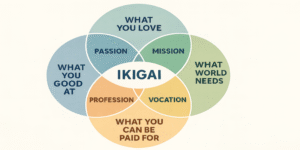The transition to a sustainable energy system has become one of the most pressing challenges of the 21st century. The terms “green energy” and “renewable energy” are often used interchangeably in policy, academia, and media, yet they represent distinct concepts with overlapping dimensions. While both are essential in achieving net-zero carbon goals, their scope, environmental impact, and technological implications differ significantly. This article critically explores these differences, their interrelationship, and their roles in supporting global and UK sustainability objectives.
1.0 Defining Green Energy and Renewable Energy
According to Hadian and Madani (2015), green energy refers to energy sources that have minimal environmental impact, producing little to no greenhouse gases or pollutants during production and consumption. Examples include solar, wind, geothermal, and small-scale hydroelectric power. The defining characteristic is environmental cleanliness, meaning the energy source must not harm ecosystems or degrade natural resources.
Conversely, renewable energy denotes energy derived from sources that naturally replenish over short timeframes, such as sunlight, wind, water, and biomass (Hammond, 2000). While renewability concerns resource sustainability, it does not automatically ensure environmental benignity. For instance, biomass is renewable but can produce carbon dioxide emissions when combusted and may contribute to deforestation if managed unsustainably (Shmelev & Van Den Bergh, 2016).
Therefore, while all green energy is renewable, not all renewable energy is green. This distinction is pivotal for developing sustainable energy policies that minimise carbon emissions while protecting biodiversity and human health.
2.0 Historical and Policy Context
The evolution of the concepts is rooted in the global response to the oil crises of the 1970s and the subsequent realisation of environmental degradation caused by fossil fuels (Hammond, 1998). In the United Kingdom, the transition gained momentum through the Renewables Obligation (RO) policy (2002), which required electricity suppliers to source a proportion of power from renewables (Toke, 2005). However, early policies focused more on energy security and economic diversification than on ecological sustainability.
Recent frameworks such as the UK Energy Security Strategy (2022) and the Net Zero Strategy (HM Government, 2021) have embedded both green and renewable energy principles into national planning, emphasising a low-carbon transition that safeguards the environment and promotes green innovation. This policy shift reflects the growing understanding that renewable energy expansion must also align with environmental ethics to be genuinely sustainable.
3.0 Comparative Analysis: Green vs Renewable Energy
The key differences between the two concepts are conceptual and practical. Lu et al. (2020) note that while renewable energy technologies reduce dependence on finite resources, their full life-cycle impacts vary widely. Large-scale hydropower, for example, though renewable, can disrupt aquatic ecosystems and displace communities, questioning its classification as “green”. In contrast, solar and wind technologies produce minimal emissions post-installation and are typically regarded as green and renewable.
The table below summarises the major distinctions:
| Dimension | Green Energy | Renewable Energy |
| Definition | Energy from natural sources that have low or zero environmental impact | Energy from sources that replenish naturally |
| Focus | Clean impact and low emissions | Sustainability of supply |
| Examples | Solar, wind, geothermal, tidal | Solar, wind, hydro, biomass, tidal |
| Environmental Impact | Always low | Can vary (e.g., biomass, hydropower) |
| Policy Relevance | Linked to climate mitigation | Linked to energy security and diversity |
In short, green energy is a subset of renewable energy that prioritises ecological preservation and carbon neutrality (Menegaki, 2008).
6.0 The Role of Technology and Innovation
Technological innovation plays a decisive role in bridging the gap between green and renewable energy systems. Wątróbski et al. (2016) emphasise that smart grids, energy storage solutions, and digital monitoring enhance the efficiency and sustainability of renewable sources, making them greener in practice. For example, Tesla’s Powerwall and UK’s Hornsea Wind Farm integrate storage and predictive technologies to optimise performance while minimising waste.
Furthermore, decarbonisation of energy supply chains—from manufacturing of photovoltaic panels to recycling of wind turbines—is key to ensuring that renewable technologies remain environmentally green (Baloch et al., 2022). The transition from fossil-based materials to bio-based composites in turbine blades exemplifies how green design principles can complement renewable systems.
7.0 Economic and Social Implications
From an economic standpoint, both energy types drive green employment and industrial innovation. The International Energy Agency (IEA, 2024) reports that the renewable sector employs over 13 million people globally, with wind and solar leading job creation. Moreover, Ma and Wang (2025) find that renewable expansion fosters green jobs in manufacturing, installation, and maintenance, enhancing long-term socio-economic resilience.
Socially, access to clean energy promotes equity and well-being, especially in developing regions where fossil fuel dependency hinders sustainable growth. However, community acceptance remains a barrier. Studies by West, Bailey and Winter (2010) highlight public resistance to renewable infrastructure due to visual, ecological, or land-use concerns—issues less pronounced in distributed, small-scale green energy systems such as rooftop solar.
8.0 Environmental Sustainability and Life-Cycle Analysis
A life-cycle perspective is crucial in distinguishing genuinely green technologies from those merely renewable. Hadian and Madani (2015) propose a System of Systems (SoS) approach to assess energy sustainability, integrating environmental, social, and economic metrics. Their findings show that geothermal and wind power exhibit the lowest carbon footprints, while biomass and large hydropower often underperform due to upstream and downstream emissions.
Additionally, Edenhofer et al. (2013) argue that the long-term sustainability of renewable energy depends on holistic evaluation of land use, water intensity, and waste management. For instance, the disposal of solar panels and wind turbine blades poses environmental risks if circular recycling systems are not implemented. This underscores that renewability does not automatically equate to environmental friendliness.
8.0 Policy and Strategic Perspectives
In the UK context, energy policy has increasingly recognised the distinction between renewable and green energy. The Climate Change Act (2008) and subsequent Net Zero Strategy (2021) embed targets not only for renewable capacity but also for carbon neutrality and environmental protection. Similarly, EU directives (Directive 2018/2001) require member states to assess the ecological footprint of renewable projects, ensuring compliance with green standards.
Globally, the United Nations Sustainable Development Goal 7 (SDG 7) — “Affordable and Clean Energy” — highlights the need for inclusive, sustainable, and environmentally sound energy systems (Hillerbrand, 2018). Therefore, the future of energy transformation lies in integrating renewable capacity expansion with green performance assurance.
In conclusion, while green energy and renewable energy share a common vision of sustainability, they differ fundamentally in focus and evaluation criteria. Renewable energy emphasises resource regeneration, whereas green energy prioritises ecological integrity. For effective policy formulation, these distinctions must be recognised to avoid greenwashing and ensure genuine environmental benefits.
The UK’s strategic direction, aligned with net-zero emissions goals, demonstrates that technological innovation, policy integration, and public awareness can align renewable systems with green principles. Future sustainability depends not only on expanding renewable capacity but on ensuring that such energy remains clean across its entire lifecycle, securing a just and resilient energy transition.
References
Baloch, Z.A., Tan, Q., Kamran, H.W. and Nawaz, M.A. (2022). A multi-perspective assessment approach of renewable energy production: policy perspective analysis. Environment, Development and Sustainability, 24(3), pp.4511–4529.
Edenhofer, O., Seyboth, K. and Creutzig, F. (2013). On the sustainability of renewable energy sources. Annual Review of Environment and Resources, 38, pp.169–200.
Hadian, S. and Madani, K. (2015). A system of systems approach to energy sustainability assessment: Are all renewables really green? Ecological Indicators, 52, pp.194–206.
Hammond, G.P. (1998). Alternative energy strategies for the United Kingdom revisited: market competition and sustainability. Technological Forecasting and Social Change, 59(2), pp.131–155.
Hammond, G.P. (2000). Energy, environment and sustainable development: a UK perspective. Process Safety and Environmental Protection, 78(4), pp.304–323.
Hillerbrand, R. (2018). Why affordable clean energy is not enough: a capability perspective on the Sustainable Development Goals. Sustainability, 10(7), 2485.
Lu, Y., Khan, Z.A., Alvarez-Alvarado, M.S. and Zhang, Y. (2020). A critical review of sustainable energy policies for the promotion of renewable energy sources. Sustainability, 12(12), 5078.
Ma, B. and Wang, A. (2025). Exploring the role of renewable energy in green job creation and sustainable economic development: An empirical approach. Energy Strategy Reviews, 58, 101234.
Menegaki, A. (2008). Valuation for renewable energy: A comparative review. Renewable and Sustainable Energy Reviews, 12(9), pp.2422–2437.
Shmelev, S.E. and Van Den Bergh, J.C.J.M. (2016). Optimal diversity of renewable energy alternatives under multiple criteria: An application to the UK. Renewable and Sustainable Energy Reviews, 60, pp.679–691.
Toke, D. (2005). Are green electricity certificates the way forward for renewable energy? Environment and Planning C: Government and Policy, 23(2), pp.361–374.
Wątróbski, J., Ziemba, P., Jankowski, J. and Zioło, M. (2016). Green energy for a green city—A multi-perspective model approach. Sustainability, 8(8), 702.
West, J., Bailey, I. and Winter, M. (2010). Renewable energy policy and public perceptions of renewable energy: A cultural theory approach. Energy Policy, 38(10), pp.5739–5748.









